
New 3-D mammogram option the next step in diagnosis, treatment
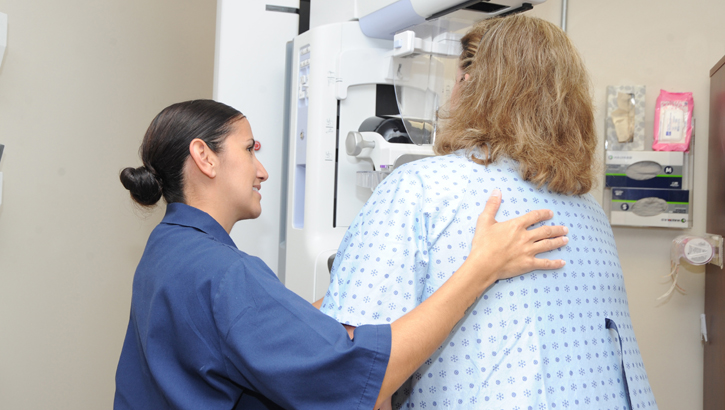
Chief Hospital Corpsman Naomi Perez, a certified mammogram technician (left), conducts a mammogram for a patient at Naval Hospital Pensacola. A mammogram is a low-dose X-ray procedure used to detect the early stages of breast cancer. A policy change effective Jan. 1, 2020, will allow digital breast tomosynthesis, or 3-D mammography, to be used to screen for breast cancer. The procedure – known technically as Digital Breast Tomosynthesis (DBT) – will be offered primarily to women age 40 and older, and women age 30 and older who are considered high-risk for breast cancer. The procedure’s 3-D images provide a more thorough means of detecting the disease. (U.S. Navy Photo by Mass Communication Specialist 1st Class Brannon Deugan)
After nearly a year’s effort, a policy change effective Jan. 1, 2020, will allow digital breast tomosynthesis, or 3-D mammography, to be used to screen for breast cancer. While the procedure may not be offered at all military treatment facilities, the expanded benefit will be available as a screening and diagnostic tool for beneficiaries with TRICARE coverage.
The procedure – known technically as digital breast tomosynthesis or DBT – will be offered to primarily women age 40 and older, and women age 30 and older who are considered high-risk for breast cancer. Practitioners can offer DBT to other patients should a diagnosis determine the presence of a risk factor
The procedure’s three-dimensional images provide a more thorough means of detecting the disease – particularly in patients with dense breast tissue. The digital breast tomosynthesis technique is similar to that of a CT (computed tomography) scan. The source of the CT X-ray repeatedly sweeps over the breast at spaced intervals. The final imagery offers a cross section of “slices,” or adjacent segments, of tissue.
"Mammography is the gold standard in detecting breast cancer, and the DHA is pleased to bring this advanced form of imaging to our patients," said Dr. Paul Cordts, chief medical officer for the Defense Health Agency. "We know how important it is to our patients to have access to the latest technology to improve their health outcomes. Digital breast tomosynthesis allows for earlier detection and diagnosis of smaller cancers and, if discovered early, it opens up more options to treat it quickly while in a nascent stage, with improved outcomes and potentially less side effects."
According to Amber Butterfield of TRICARE’s Medical Benefits Reimbursement office in Aurora, Colorado, the expanded benefit for breast cancer screenings is allowed through provisional coverage authorized by Assistant Secretary of Defense for Health Affairs Thomas McCaffrey. Provisional coverage is a special authority that allows extension of coverage for items that are undergoing evaluation or have beneficial effects not yet proven.
Between 2016 and 2018, roughly 80,000 TRICARE beneficiaries were diagnosed with either malignant abnormal growths of the breast, called carcinomas, or pre-cancerous cells, called neoplasms. To address this, leaders at the DHA were determined to find a way to expand breast cancer screenings using the DBT technology, while adhering to congressional requirements as they pertain to provisional authority.
“By regulation, TRICARE follows guidelines from the U.S. Department of Health and Human Services for preventive services,” Dr. James Black, medical director of the Clinical Support Division at DHA, said. “This includes the U.S. Preventive Services Task Force, which gives recommendations on provisional preventive services.”
Although the task force has yet to recommend DBT for cancer screening, the decision by DHA leadership to expand DBT to annual cancer screenings was made a year ago. Since the USPSTF does not currently recommend DBT as a more effective screening tool than 2-D mammography, the DHA had to find a way to offer coverage under current statutes that govern what health services TRICARE can provide beneficiaries.
Black cited the efforts of retired Navy Vice Adm. Raquel C. Bono, the former DHA director, along with subject-matter experts from the services, who provided guidance that led to the provisional adaptation of DBT coverage.
Their focus included which commercial insurance carriers cover DBT and other coverage criteria. From there, DHA’s medical benefits and reimbursement section put together a provisional coverage determination and submitted it to the office of the Assistant Secretary of Defense for Health Affairs – who, by law, is the approval authority for any such changes. The coverage determination was approved in September and coverage will begin Jan. 1, 2020.
Although the task force has yet to recommend 3-D breast DBT for cancer screening, DHA leadership is confident that within the five years DBT has been approved on provisional authority, the USPTF will obtain enough research to reach a firm recommendation.
Beneficiaries who have questions about DBT services offered in locations convenient to them should contact their TRICARE provider or regional customer service call center.
Achievements in 2019 provide strong foundation for year ahead
Article
12/23/2019
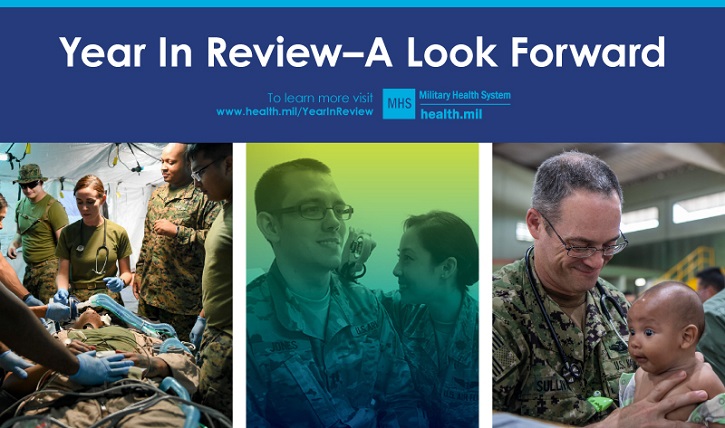
Dedication, commitment to mission praised as changes continue
3D Mammography Toolkit
Publication
12/19/2019
3D Mammogram Facebook Post
Photo
12/17/2019
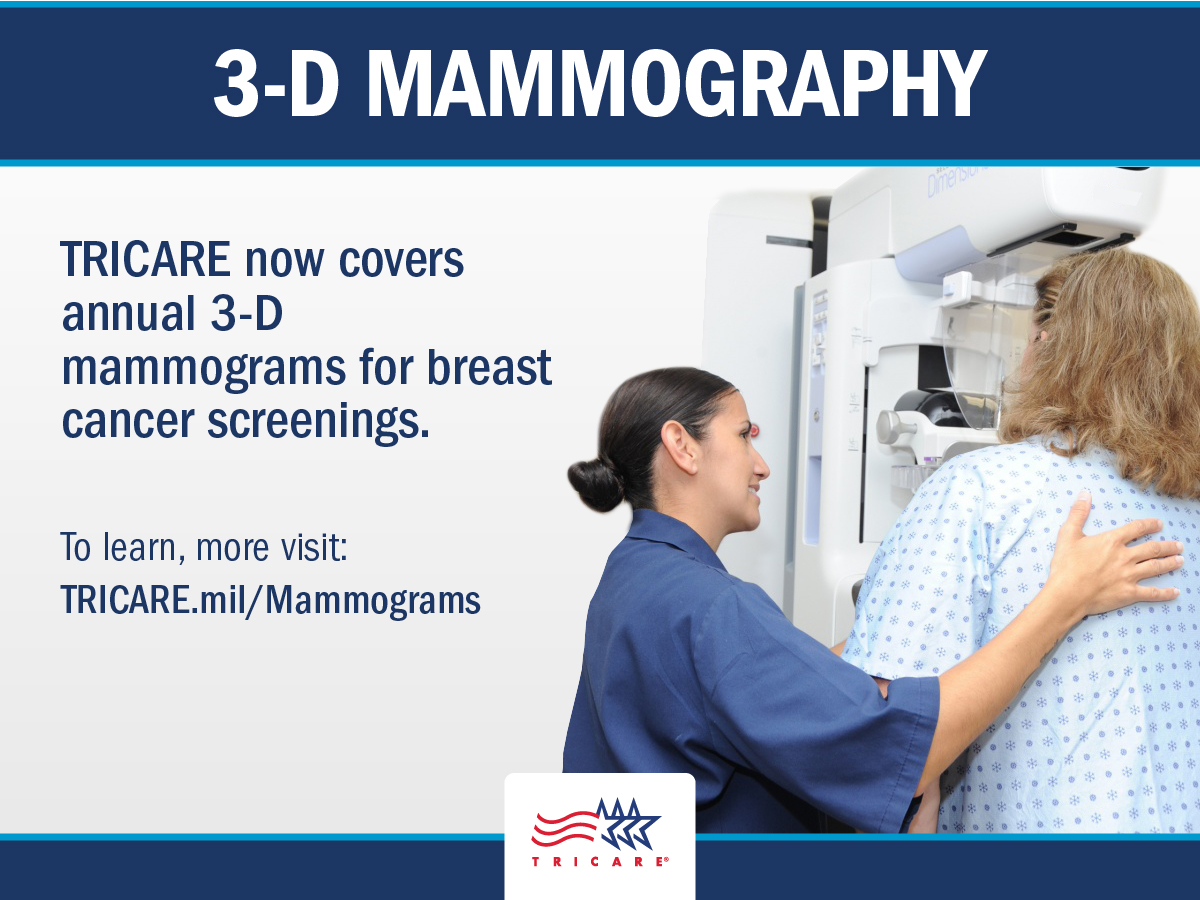
Share this graphic to spread the word about 3-D Mammography coverage
3D Mammogram Screensaver
Photo
12/17/2019
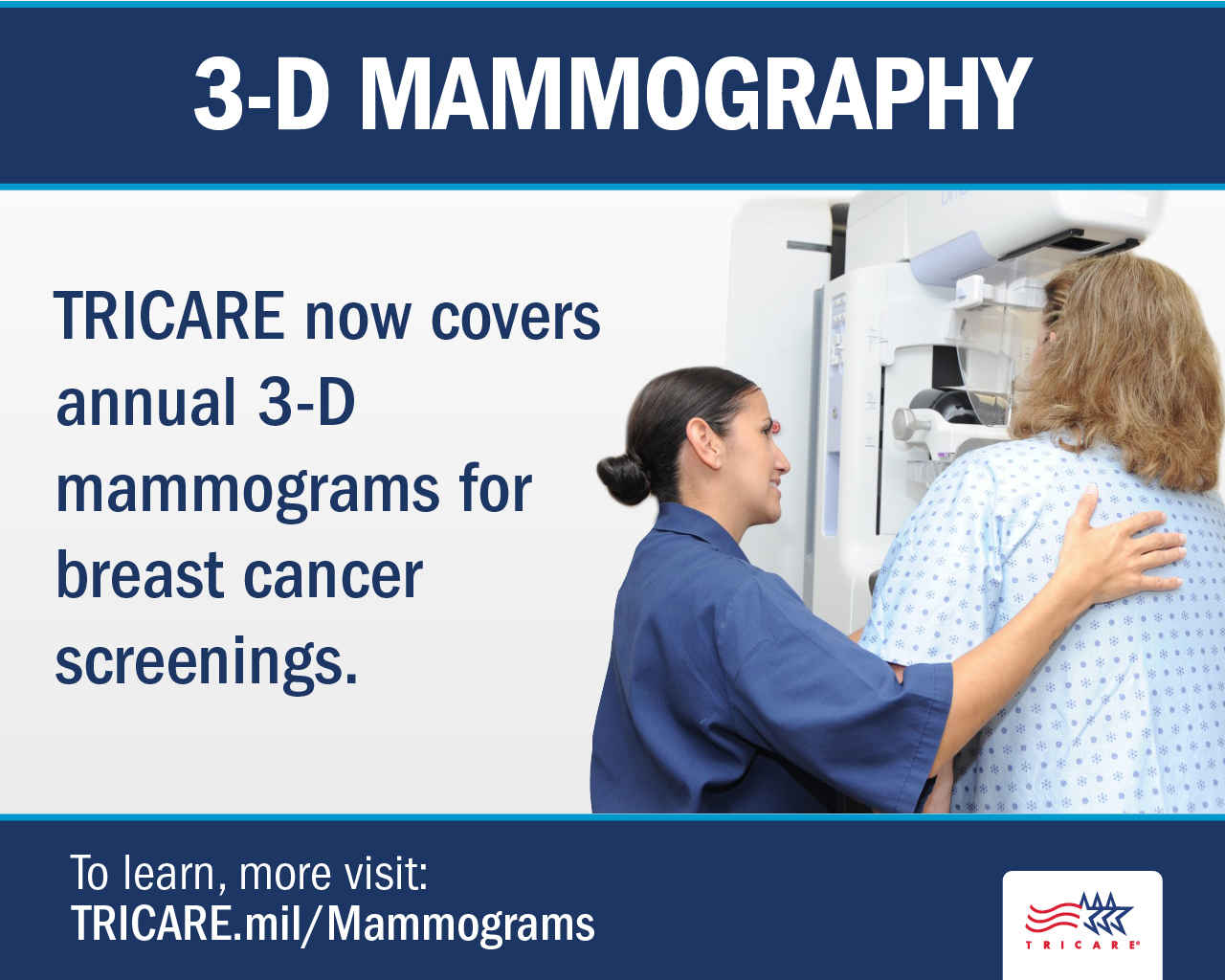
Share this screensaver to spread the word about 3-D Mammography coverage
3D Mammography Infographic 1
Publication
12/16/2019
Share this infographic to spread the word about 3-D Mammography coverage
3D Mammography Infographic 2
Publication
12/16/2019
Share this infographic to spread the word about 3-D Mammography coverage
Talking_Points_3D_Mammography
Publication
12/16/2019
These talking points share information about 3-D mammography
Award-winning Navy team successfully improves care for women, infants
Article
11/26/2019
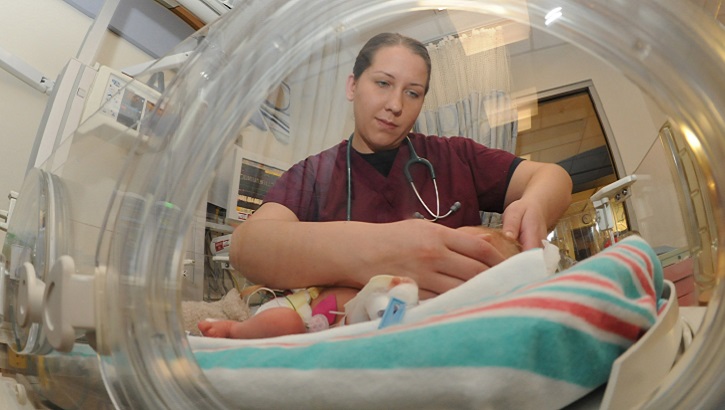
An award-winning team of nurses successfully implemented a treatment guide at Naval Medical Center San Diego that improves labor and delivery outcomes
Open Season and BWE Issue Annex
Publication
11/23/2019
This Open Season and BWE Issue Annex contains products with additional information about how to enroll during Open Season
FacebookStories Open Season 20191 3 I don’t want to change my plan
Infographic
11/22/2019

Share this to spread word about Open Season
FacebookStories_Open Season 2019_2 (I want to switch)
Infographic
11/22/2019

Share this to spread word about Open Season
FacebookStories_Open Season 2019_1 (I want to enroll)
Infographic
11/22/2019

Share this to spread word about Open Season
Open Season Logo ANNEX Primary Logo
Photo
11/22/2019
Share this on social media!
Open Season Logo ANNEX Secondary Logo
Photo
11/22/2019
Share this on social media!
Social Media Banners_Twitter Banner
Photo
11/22/2019
Share this to spread information about Open Season enrollment!






















.png)











No hay comentarios:
Publicar un comentario